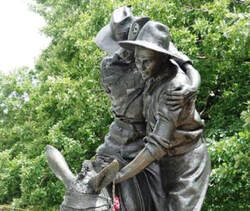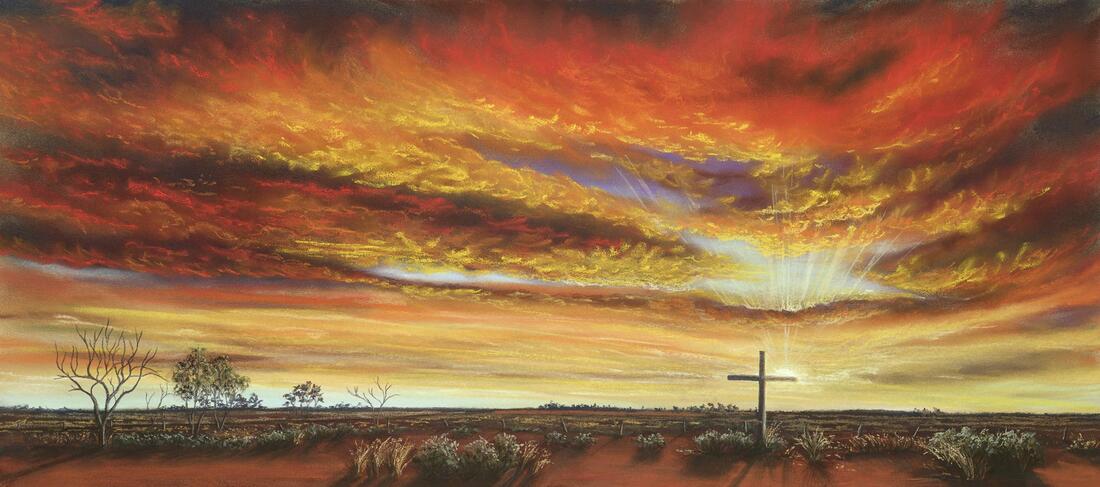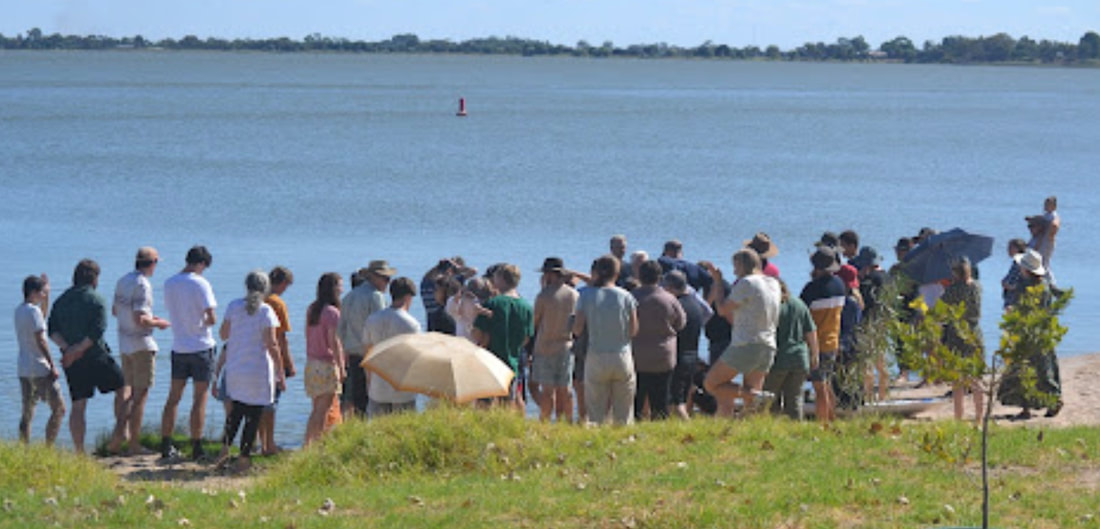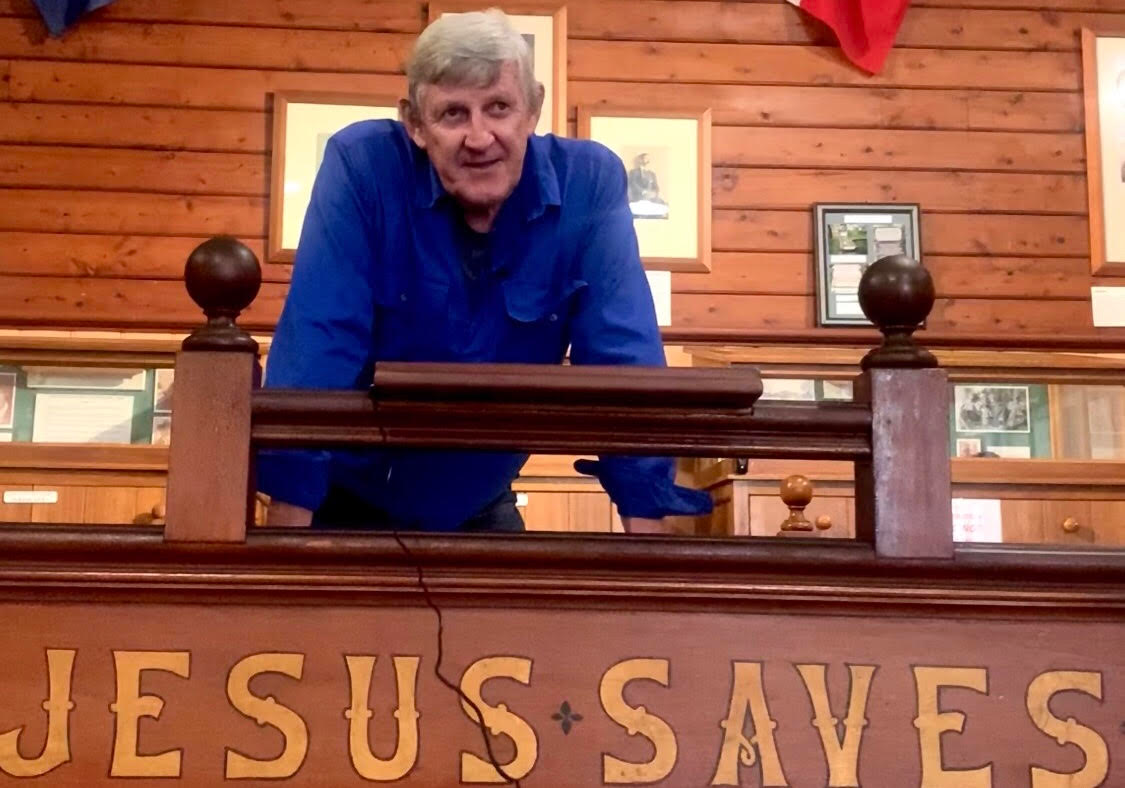|
On a fiercely hot 11th of July 1924, the event that took the Paris Olympics by storm was the astonishing gold medal run by sprinter Eric Liddell. On that day, against the odds, ‘The Flying Scotsman’ as he was known, fully embodied the Olympic motto “Faster, Higher, Stronger.” He had copped a wave of criticism at home when he declined running in his favoured 100m event because it was scheduled on a Sunday, which for him was set aside for God.
He was transformed into a larger-than-life hero when, given an alternative to run in his less favoured 400m, he won by seven metres in world record time. Over the following century this unlikely story of muscular Christianity has grown in the telling, impacting people of every kind all over the world. Now in 2024, as the multi-billion-dollar international sporting extravaganza opens in the ‘City of Love’, it’s remarkable that the most enduring image from the 1924 Games is that of Eric, head thrown back, blitzing the field, proving on a cinder race track that principle mattered more than patriotism.
1 Comment
I was encouraged by the way the remarkable story of William Arnott ‘the Biscuit King of Newcastle’, fired interest. For me, telling the tale of the penniless convict’s son who built a business employing 800 workers, took on a surprising twist when I realised its threads were woven into the tapestry of my Dad’s family history.
Two years after 20-year-old William arrived in Maitland on the Hunter River in 1851, my great-grand mother Marianne stepped off the barque Lady Anne, a child immigrant from Portsmouth. Her family settled beside Newcastle Harbour at Stockton. She later married and mothered five children. Mary Ann Dalby loved serving people. For the next fifty years, while raising her family and sharing in the running of a shoe business with her husband, she maintained her commitment to organisations that touched the lives of the needy. Suffering the loss of two infant children only seemed to deepen her compassion. The majority of Australians in the past century and a half have sunk their teeth into one or other of a SAO, a Monte Carlo or a Tim Tam. But I guarantee most of us wouldn’t know a cracker about the battler who created the legendary ARNOTT’S biscuit empire. It’s one of the truly great stories of Australian industry, but more than anything, it’s an inspirational narrative of a man who refused to give in to repeated disasters.
Click the link to READ and WATCH to learn more. The Hunter River at Morpeth This is the unique story of two radical experiments on the same piece of ground on the red soil plains 20kms West of Bourke.
It’s 1887. Picture a cluster of burly, sunburnt men watching anxiously day after day as the bit of their American oil drill wound deeper and deeper into the red soil at the back of Bourke. Then, hats were thrown high with an exuberant shout as water from 300 metres below gushed fifty meters into the air. The American boring team had struck the Great Artesian Basin – 1.7 million square kms of life-giving liquid lying untapped beneath a fifth of the continent. Ninety years later in 1978, I arrived at Pera Bore with my family – about 70 kms South of Keribree Station where that dramatic first deep artesian well had gifted entrepreneur William Walter Davis ‘liquid gold’ to prosper his sheep station. Ahead of us lay an experiment that we hoped would prosper Australia.  The bronze sculpture of Private John Simpson and his donkey carrying a wounded Digger to safety, stands sentinel at the entrance to the Australian War Memorial in Canberra. It’s probably Gallipoli’s most poignant symbol of heroism and mateship. That image of Simpson laying down his life for a friend, has been a vital part of the mythology told to Australian school children every ANZAC Day. It makes self-sacrifice larger than the story of war itself. Many may not know it echoes the story of the Good Samaritan that Jesus devised to illustrate the heart of true humanity. He took it a step beyond mateship. His hero was a Samaritan – not a mate, but a despised cultural enemy. Jesus deliberately chose to picture a foreigner using his donkey to rescue the victim of a gang-bashing, left lying on a lonely stretch of road. It was the man’s need he saw, not his creed. It’s been such a potent story, the phrase ‘good Samaritan’ has become a common way to describe anyone doing a good deed. John Ridley launched himself at life. He was a flour miller at 15, a self-taught scientist and inventor, and a preacher at 18. At 34 he arrived in South Australia and inside three years he had installed the colony’s first steam engine, bought shares in the Burra mine and invented a machine for stripping wheat that revolutionised grain harvesting across the country. He refused to take any money from his invention, seeing it as a gift to aid the growth of the new colony. More than anything, he understood the priority of promoting its spiritual life and was an energetic lay preacher with an eye for a larger harvest. He used his prosperity to make gifts to evangelical churches and missions in Australia and overseas. (To learn more watch the video and click Read More below. ) You could say Easter arrived on the banks of the Baarka/Darling River on Feb 28th 1828 when Hamilton Hume sat in front of the perplexed Aboriginal tribe and threw down a branch as a sign of peace. The young home-grown explorer was a man of faith, as was expedition leader Captain Charles Sturt. Together, they relayed compassion for a people who they saw were afflicted with smallpox. Their impeccable record in relating to the native people wherever they journeyed mirrored the teachings of Jesus.
Easter has arrived on the Western plains in many different forms since then. Those who brought it weren’t all saints, but they were real. In 1856, two dispirited young Germans headed to their home base in London from Lake Boga near Swan Hill, their mission declared a failure. Andreas Täger and Friedrich Spieseke had left Germany five years earlier, fired with a passion to teach the Christian faith to the Aboriginal people of Australia.
Encouraged by Governor La Trobe, a fellow member of the Moravian Brethren Church who shared the vision and set land aside at Lake Boga, they set about building a mission station to both protect and educate the Wemba Wemba people. Their ambitions were high and their spirit genuine, but many things conspired to erode their manful efforts. But were they failures? Click on Read More to hear more of the story of Lake Boga. Recently, when I attended a Cornerstone Community gathering in Swan Hill, I was privileged to witness a baptism at Lake Boga. Young men are still stepping out to take commitment to Jesus seriously . When some leading American retailers were sent a pair of Australian made pants from a factory in Warrnambool Victoria for testing in 1962, they were appalled. Their considered opinion was that the maker of these Merino wool trousers had got it wrong – they were just too good! They would never wear out and customers would not return. The experts recommended that the maker, Fletcher Jones, study the science of ‘Planned Obsolescence.’ They didn’t know who they were talking to! Fletcher, the son of a Bendigo blacksmith had battled his whole life to do the exact opposite. He spoke proudly of being reared in a struggling Christian household where his father taught him concern for the rights of the workers. He was to treat his fellows as creatures made in God’s image, destined to live and work in creative communities. This bred a life-long conviction never to treat his employees as mere cogs in a machine to make him wealthy. In the 1880s, the fluttering Blood and Fire flag, the booming drum and uniformed men and women singing and preaching, announced the arrival of General Booth’s Salvation Army on the street corners of Australia’s cities and country towns. It was mobilisation on an extraordinary scale. Barely fifteen years had passed since the Salvos first took religion to the poor and destitute in the streets of London with their offerings of ‘Soup, Soap and Salvation’ and they appeared half a world away in the Outback!
|
AuthorJoin The Outback Historian, Paul Roe, on an unforgettable journey into Australia's Past as he follows the footprints of the Master Storyteller and uncovers unknown treasures of the nation. Archives
October 2023
Categories
All
|
|
Sponsored by
|
Privacy Policy
|
|
Copyright 2020 by The Outback Historian
|
Site powered by ABRACADABRA Learning
|









 RSS Feed
RSS Feed

